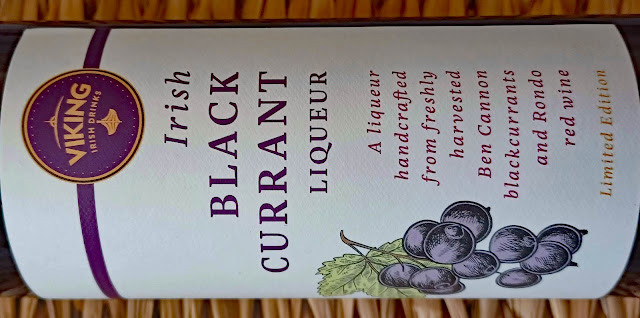A Quart of Ale± #118. On the craft journey with Elbow Brewery
Following German Beer Rules Helps
Elbow Lane Brew Winners
“When we opened the Elbow Lane Brewery in 2014, we decided we would follow the German beer purity law known as the Reinheitsgebot.”
“It has worked and worked very well for us,” continued Elbow Lane Brewer Russell Garet as he opened last Wednesday’s tasting of their beers, part of a mini-series under the Cork on a Fork Festival umbrella.
 |
| Russell Garet |
That famous rule was introduced in 1516 by Duke Wilhelm IV of Bavaria. The decree allows for only hops, barley, water and, later, yeast in each and every beer. It has served Bavaria very well indeed.
We started the tasting with the Elbow Lane Lager. No surprise then that it is a continental style lager. “More recently we have started using Irish Lager malt, though with a small amount of German malt. The Irish though is just as good.”
 |
| Closed lanes and signs and Elbow Lane beers |
“We don’t over-process, we use old brewing methods. The lager has a slight haze, is unfiltered and takes 6 weeks overall. It has slight aromas of vanilla and of the grassy hops.”
 |
| Stout for angels, sinners & saints |
Then we were on to the second most popular beer in the Elbow Lane range: the Jawbone Pale Ale, with an ABV of 5%. “The hop here is Cascade - a very popular hop - and immediately you notice its citrus aromas. There is not a lot of bitterness - we tend to lean more towards character to match the food. It has fruity qualities, but there is no fruit in the beer!”
It was the malt that took the spotlight in the next beer, another ale, this called Wisdom with an ABV of 5.2%. There is a high concentration of Crystal Malt which gives a bolder colour and a richer caramel flavour. You get toffee on the nose and more of the caramel on the palate. “Great with smoked and roasted meats,” advised Russell. So great in this very place!
 |
| Three malts |
And now for something different, their Arrow Weisse with an ABV of 5% and typical aromas of banana and clove (from the yeast). One of my favourite styles, especially those made under the purity law.
And we finished with another favourite of mine, the Angel Stout (4.4 ABV). Here the roasted malt comes into play, contributing colour and flavour. “We focus too on the hops for bitterness and they (Hercules Germany, Pilgrim UK and Williamette USA) go in early in the process.” And so we came to the end, sipping one of the very best stouts around.
 |
| Jawbone (left) and Wisdom ales. Crystal Malt gives a bolder colour to the Wisdom. |
The five beers are the core beers here. But they do specials and seasonals from time to time, including a delicious Porter during Covid. Earlier this year they issued a beer to support Ukrainian refugees and hope to have another special in the Autumn.
The original idea sprang from a UCC experiment that caught the attention of Market Lane’s Conrad Howard and it was decided to brew in Elbow Lane. The operation started in 2014 and the emphasis from the start was on styles that match the food being served in the Market Lane Group restaurants that now include ORSO, Castle Cafe, Elbow Lane, Market Lane and most recently Goldie.
Beer of course has been around for thousands and thousands of year. “The baking of bread and the brewing of beer go hand in hand,” said Russell. “Eventually the Greeks introduced beer to Europe. Later the monasteries became influential in brewing. The Industrial Revolution saw brewing go from small scale to industrial. By the 1900s, consolidation of brands led to six giant breweries, including Watneys, owning everything beer in England. Something similar was happening in the US.”
Scientific discoveries such as pasteurisation, the isolating of yeast and beer filtration has influenced the course of beer-making.
Modern times saw the rise of craft brewing. Russell reckoned it was inspired by small wineries on the West Coast of the US. Brewers followed suit with the likes of Sierra Nevada among the leaders. “When I started taking an interest in brewing in 1986, there were just a couple of dozen small breweries in the states, now there are over three thousand.”
It emerged during the chat that Russell and Garrett Oliver of Brooklyn Brewery shared an Alma Mater and at one stage Russell’s New York brewery Chelsea was in competition with Brooklyn.
 |
| Fancy meeting you here! Garrett Oliver (left) and Russel Garet. |
Where do the names for these beers come from? Well, they are called after alleyways in the city. There is one exception: Arrow. There is a depiction of what might be an arrow over the entrance of Elbow Lane but there is an opinion growing that it may not be an arrow at all but a part of a gate as, back in the day, there were more than a few foundries in operation in the area.
What will the next one be called? I’m kind of hoping that it be a Porter and once that’s on the bottle, I’ll be happy!
* Big thanks to Russell for the tasting, He was superb, just like his beers!











%20outdoor%20dining.jpeg)
















